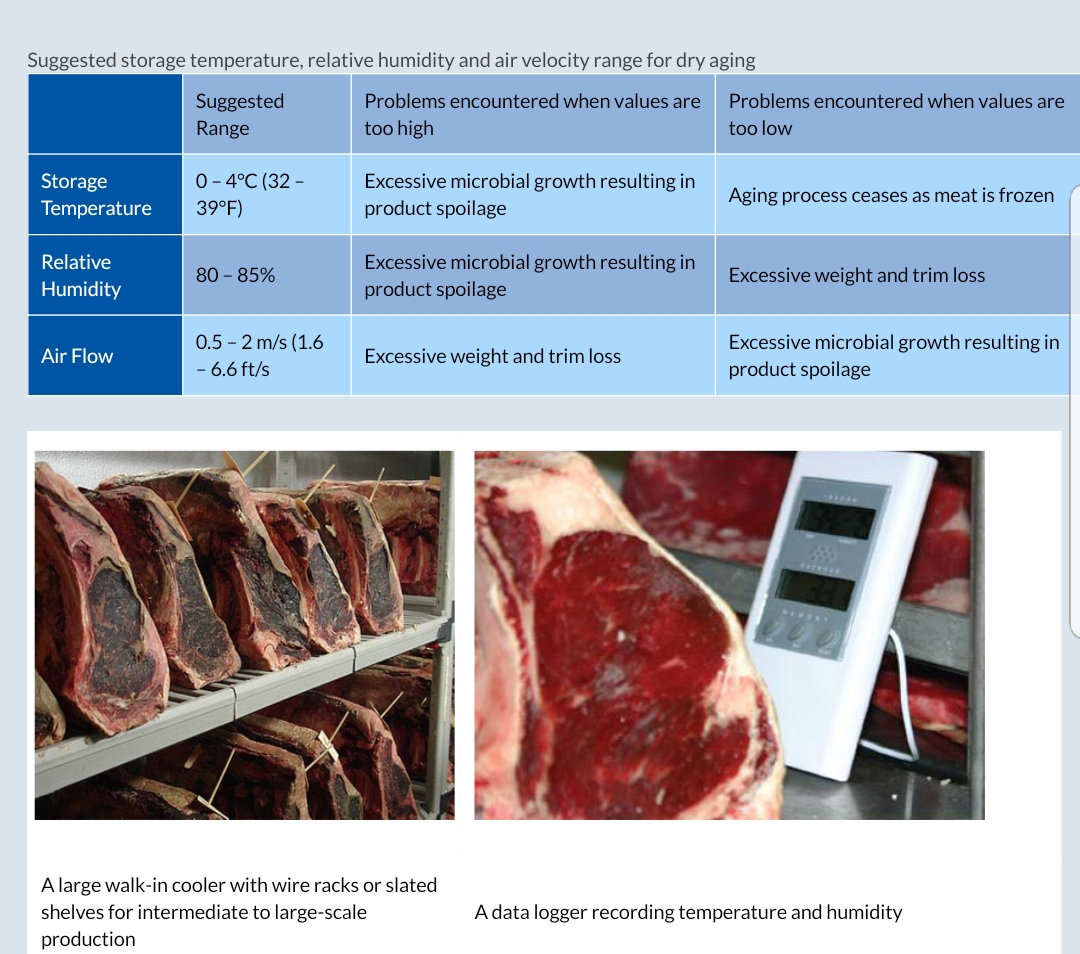Welcome to the EGGhead Forum - a great place to visit and packed with tips and EGGspert advice! You can also join the conversation and get more information and amazing kamado recipes by following Big Green Egg to Experience our World of Flavor™ at:
Want to see how the EGG is made? Click to Watch
Facebook | Twitter | Instagram | Pinterest | Youtube | Vimeo
Share your photos by tagging us and using the hashtag #BigGreenEgg.
Share your photos by tagging us and using the hashtag #BigGreenEgg.
Want to see how the EGG is made? Click to Watch
At Home Dry Agers - Looking For Feedback
Ellis_Dee
Posts: 7
Greetings Friends,
I've been doing a little research on dry aging roasts at home, and I've found a couple of in home dry aging refrigerator units. I've been looking at a couple: The Steak Locker (from Cabela's) and the SteakAger (branded by Kingsford). Both seem decent but seem to have some shortcomings. I'm looking for feedback on these models or others, or any other solutions for personal, in home, dry aging.
Thanks!
El
I've been doing a little research on dry aging roasts at home, and I've found a couple of in home dry aging refrigerator units. I've been looking at a couple: The Steak Locker (from Cabela's) and the SteakAger (branded by Kingsford). Both seem decent but seem to have some shortcomings. I'm looking for feedback on these models or others, or any other solutions for personal, in home, dry aging.
Thanks!
El
Comments
-
You don't need those at all. I'll expound in the morning.They/Them
Morgantown, PA
XL BGE - S BGE - KJ Jr - HB Legacy - BS Pizza Oven - 30" Firepit - King Kooker Fryer - PR72T - WSJ - BS 17" Griddle - XXL BGE - BS SS36" Griddle - 2 Burner Gasser - Pellet Smoker -
You can dry age in a spare refrigerator. I’ve done it a few times with 100 day being the longest
-
I concur. There are a ton of faulty arguments about humidity and sanitation out there. I have done a few in a regular fridge.______________________________________________I love lamp..
-
Thanks for the quick replies! Looking forward to hearing more about simply using a small spare fridge. Buying a smaller, dedicated fridge was my first plan, but the more I researched it seems that airflow and humidity are important to proper dry aging.
-
I believe in forum member Stikes method on dry aging. Keep it simple. Throw it in your fridge and forget about it.
I use my spare beer fridge for the dry aging process. Whatever refrigerator you use make sure it's clean. I recommend washing and cleaning it prior. Don't use any cleaning chemicals that give off an odor. I use soap and water. Cleaning the refrigerator will help eliminate any bad mold from forming on the roast. This will also help reduce any funky odors the roast could absorb into it. Also keep food/leftovers sealed tight as it can give off an aroma. You want an odorless refrigerator as much as possible. So my spare fridge works best as it only has beer, bbq sauce, and spare milk most of the time. You also want a fridge that you can keep stable in temperature. Your main fridge fluctuates in temp constantly as it is opened many times throughout the day. So a spare fridge makes it a better candidate.
You NEED to have the fridge temp between 32 and 38 degrees. Anything under 32 begins to freeze and stops the process of dry aging and anything over 38 you start to run the risk of bad bacteria growth. The day before I set a stand up thermometer in the fridge so I can get a reading on how the cold the refrigerator is running. From there you can play around with the refrigerator thermostat until you find the temp you're happy with between 32 and 38 degrees. Keep this thermometer in the fridge so you can check and see you are within temp during the aging process.
I start out by picking up a strip loin or prime rib at either Costco/Sams. Once at home take out of the cryo pack and trim away any hard fat. Saving as much fat as possible for dry aging. Once trimmed wash under cold water and pat dry.
The next step would be to grab a cookie sheet and line the bottom of the cookie sheet with paper towels. After I line the cookie sheet with paper towels I place a cooling rack or something that will keep the steak elevated and off the paper towels when dry aging. You want air to circulate under the steak as it dry ages.
After the first couple days of dry aging the steak might lose some moisture and begin to leak onto the paper towels. Clean or not you want to remove and discard the paper towels on the cookie sheet after the 2nd or 3rd day. The steak hardens up after a few days in refrigerator and will stop leaking. So no need for any new paper towels.
Most say 40-45 days is the magic number for dry aging. This is 100% up to you. You should get a light almost like pine scent while it dry ages. You don't want a foul smell as if it's going bad. (obviously) Just check the temp gauge every 3-4-5 days and make sure you are in tolerance for temp.
43-44-45 days is my sweet mark. The steak will get a hard outer bark during the dry aging process. Some will trim the outer bark while other's wont. It's all personal preference. (Most say it's sacrilegious here on the forum to trim)
I usually cut each steak to a minimum of 1". After cutting into steaks I will vacuum seal and freeze. I typically get 10-12 steaks out of a whole NY Strip.
(The first photo I borrowed from forum member 510BG as I can't find mine with the cooling rack.)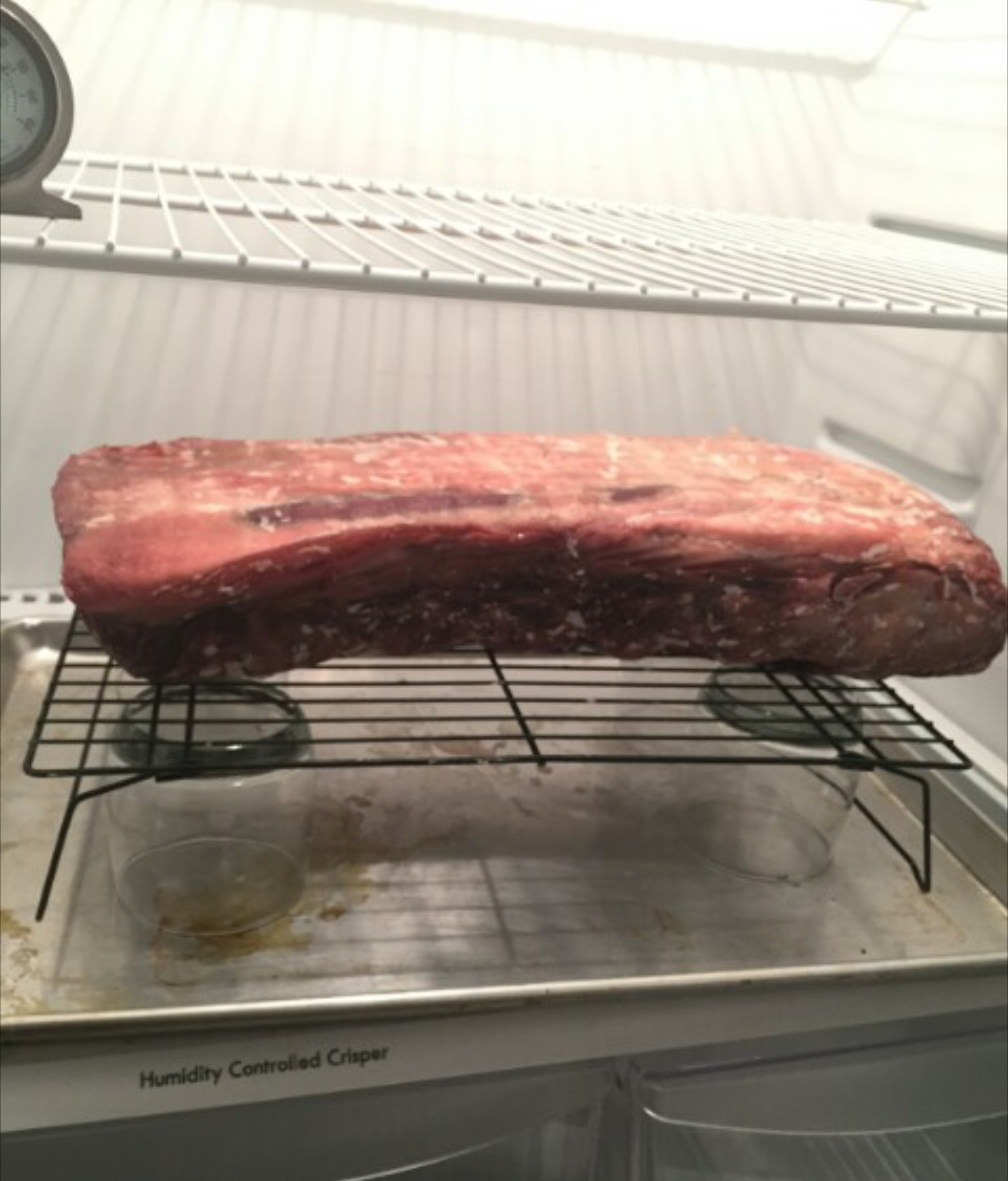
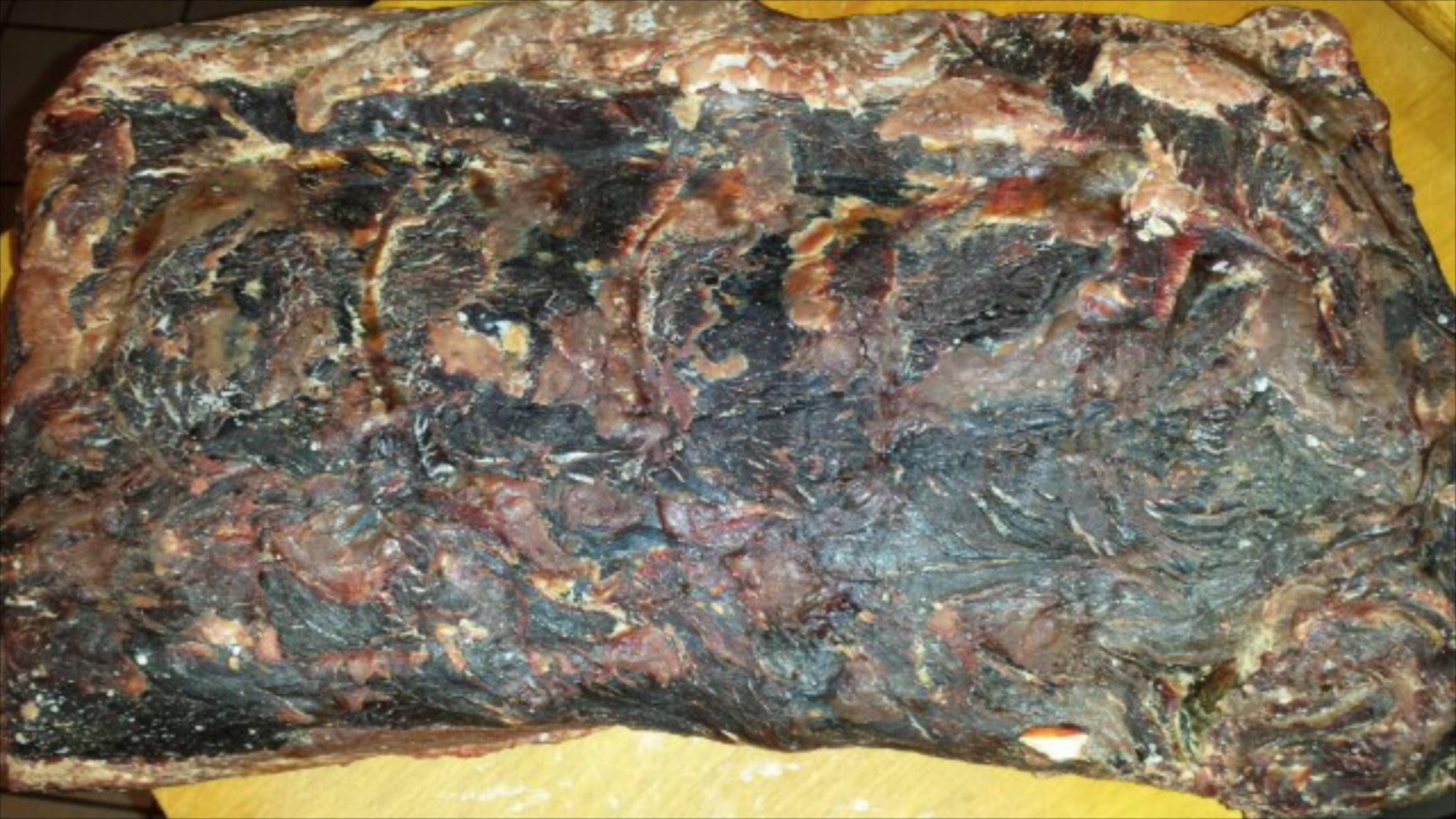
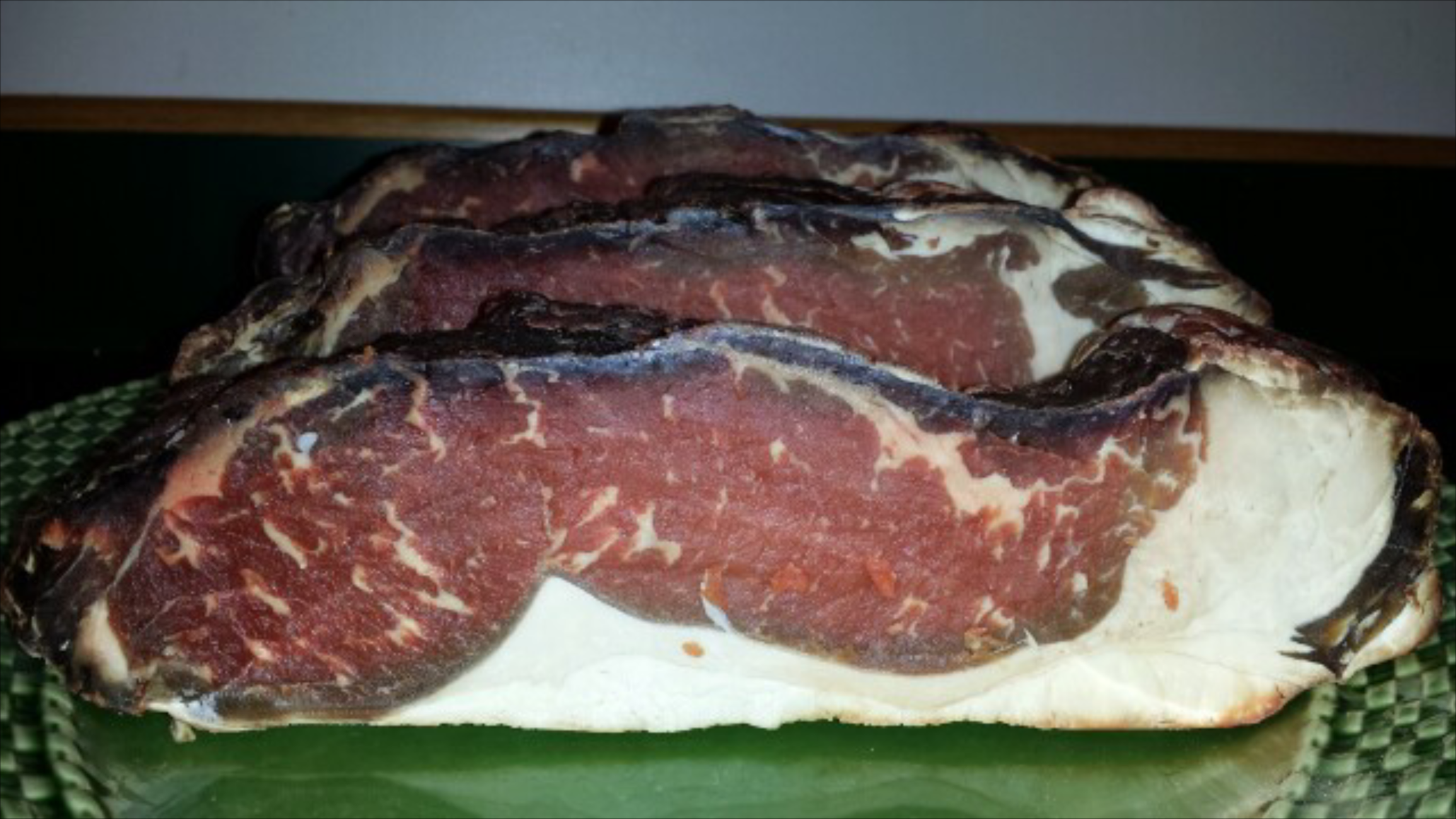
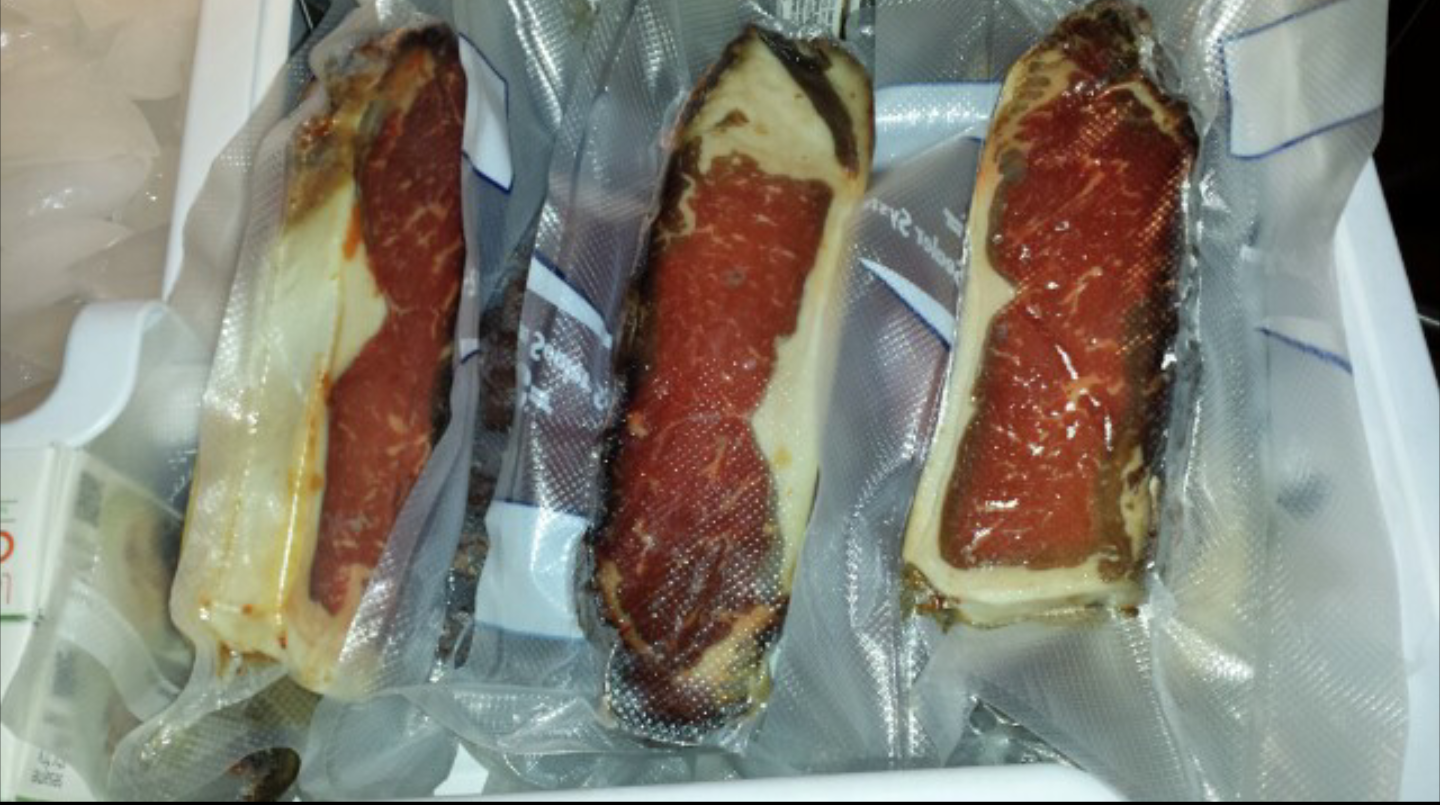
"The pig is an amazing animal. You feed a pig an apple and it makes bacon. Let's see Michael Phelps do that" - Jim Gaffigan
Minnesota -
I agree with everything @WeberWho said; and even though I have 4 fridges, I dry age in my main fridge in the kitchen. I think the air exchange opening it a few times a day is good to keep the air from getting stale. Sure the temp in the fridge rises when opening it for a few minutes, but the temp of the meat does not and I feel that is the most important part.
We clear out the top shelf, and use the exact same cookie cooling rack as shown above without even cleaning the fridge. I do put down a few paper towels the first 2 days. I usually dry ribeyes, so I tie it as round as possible, then in the fridge it goes. When we want a steak, we lop off whatever we need but usually not before 30 days. If you want one at 15 - no worries - take it.
The only thing I have learned not to do is put cheese next to it. The time I did, 3 days later I got small white mold spots on it. I just took a paper towel with some vinegar on it wiped it off, moved the cheese and never had it happen again. If I recall properly, that was mid way through the drying process and I lived to type this post.
I will post pictures in a little bit - they are all on my phone.
--------------------------------------------------
Burning lump in Downingtown, PA or diesel in Cape May, NJ.
....just look for the smoke!
Large and MiniMax
--------------------------------------------------Caliking said: Meat in bung is my favorite. -
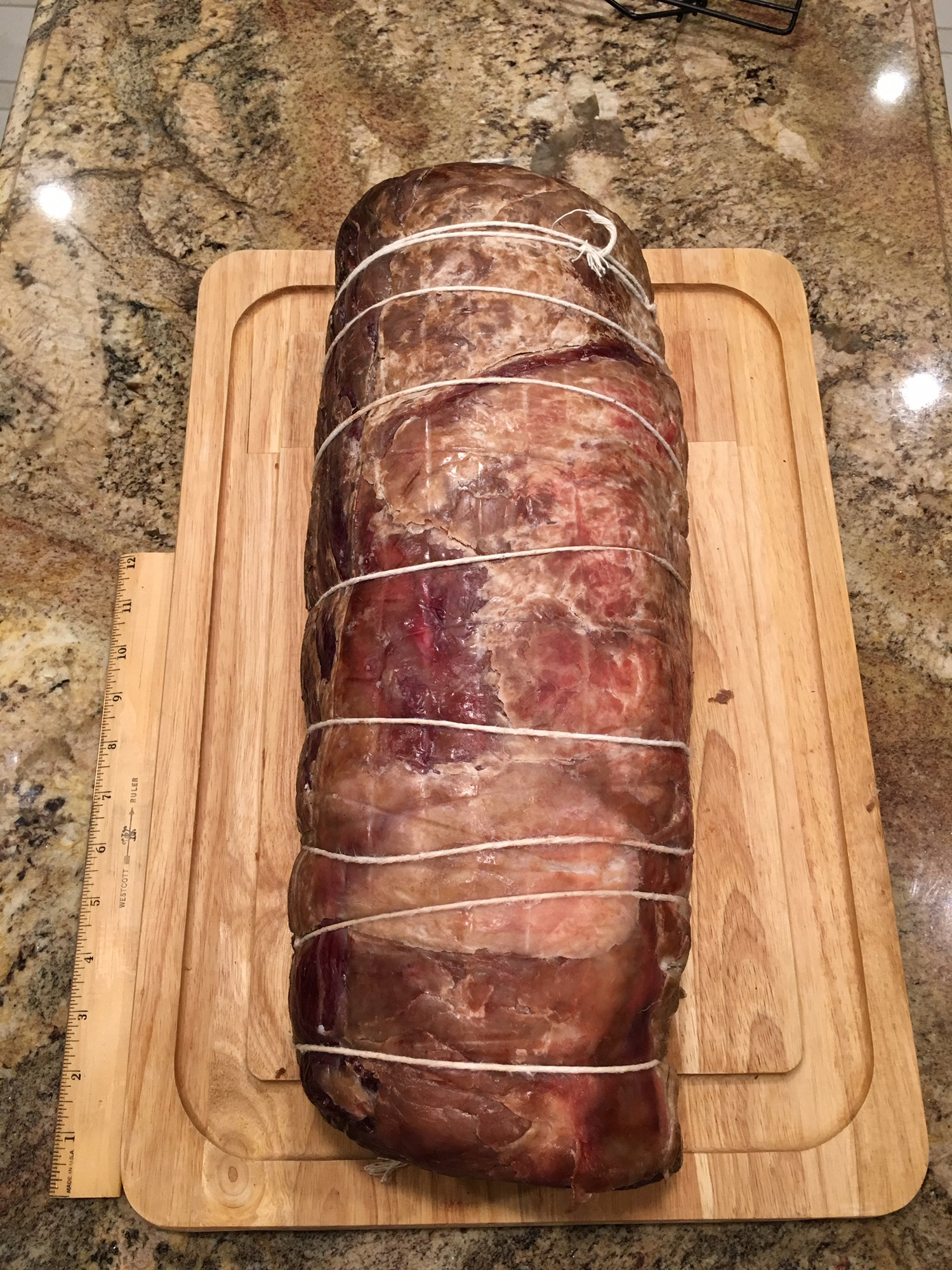
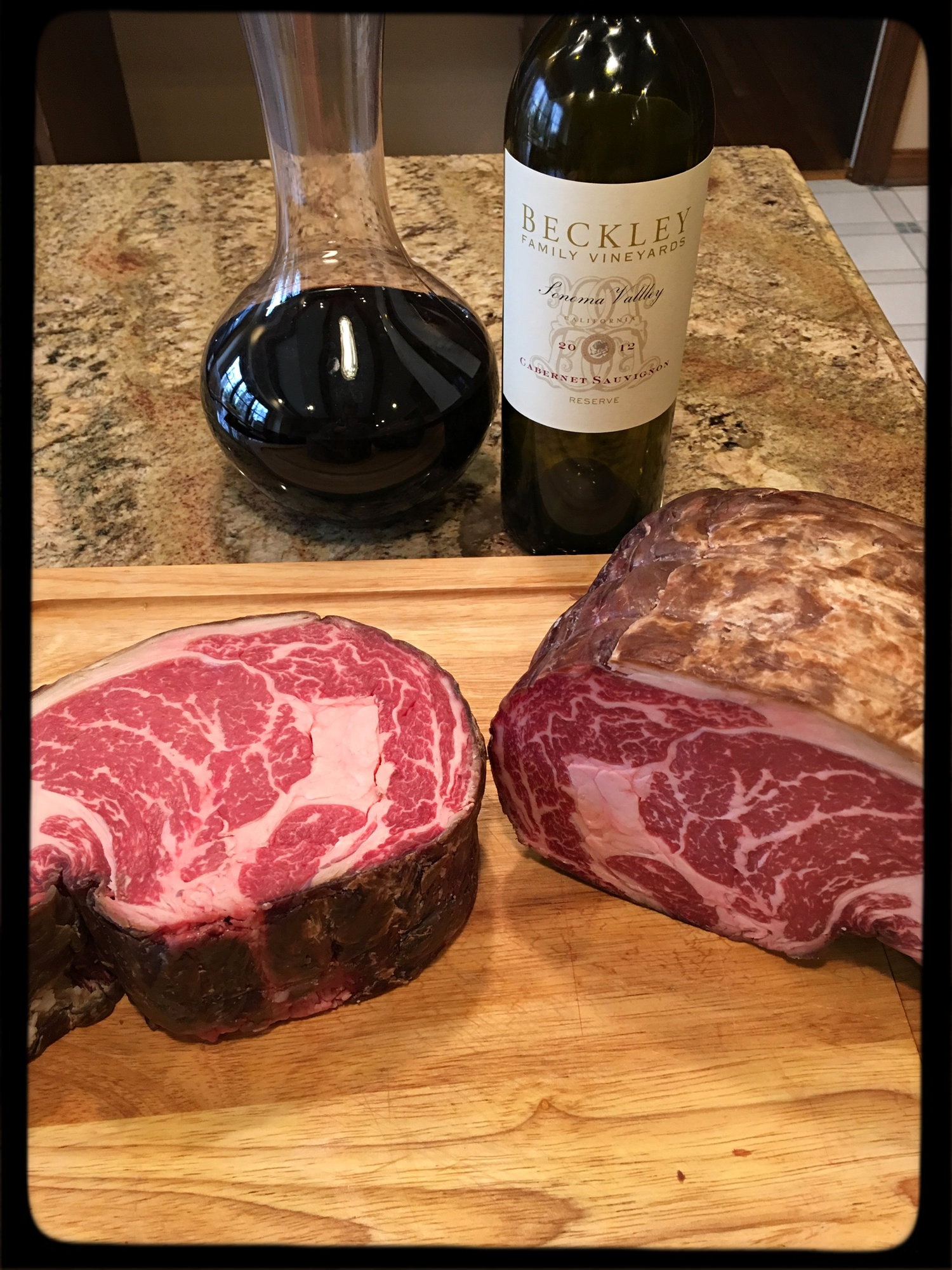
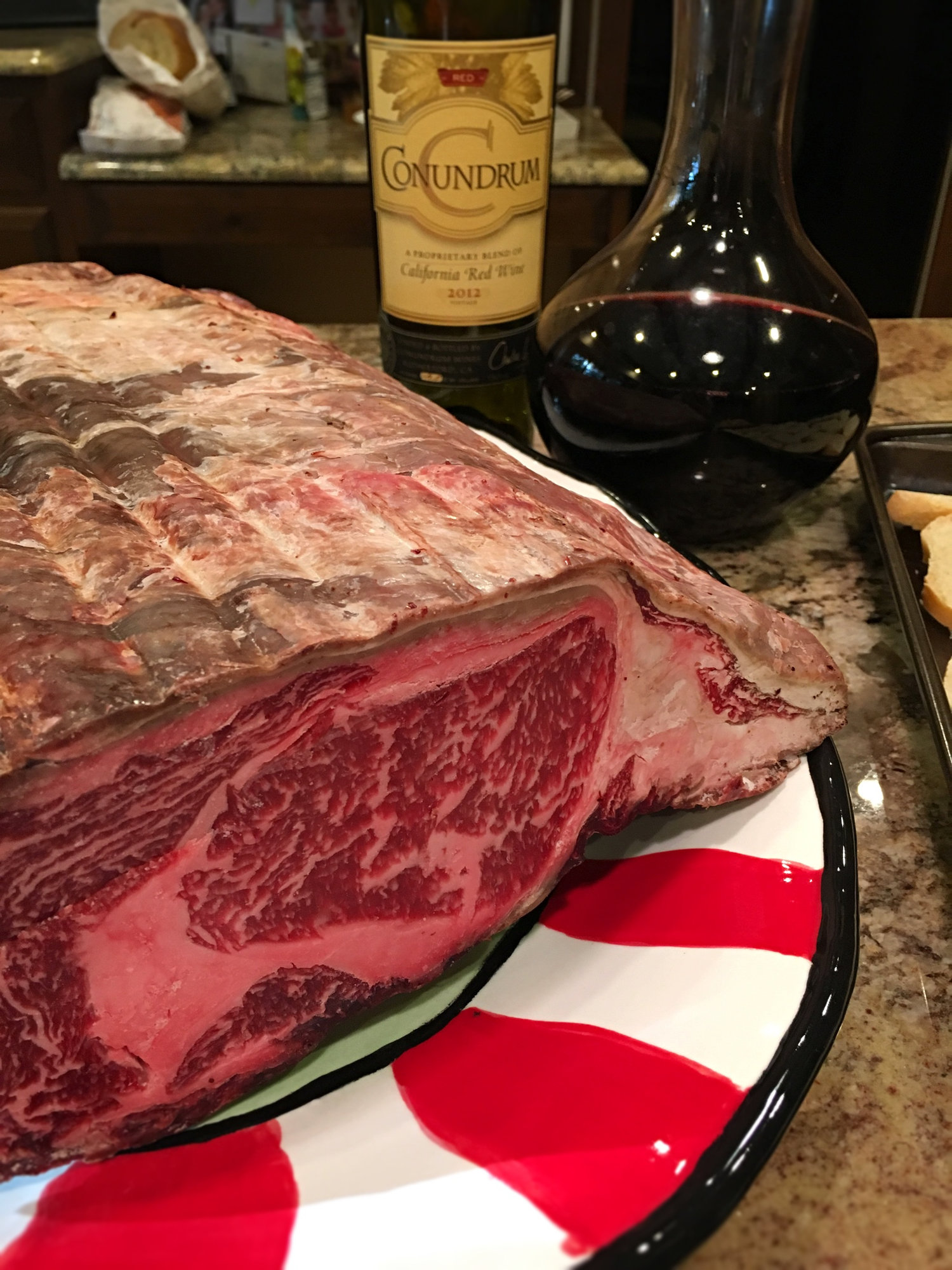
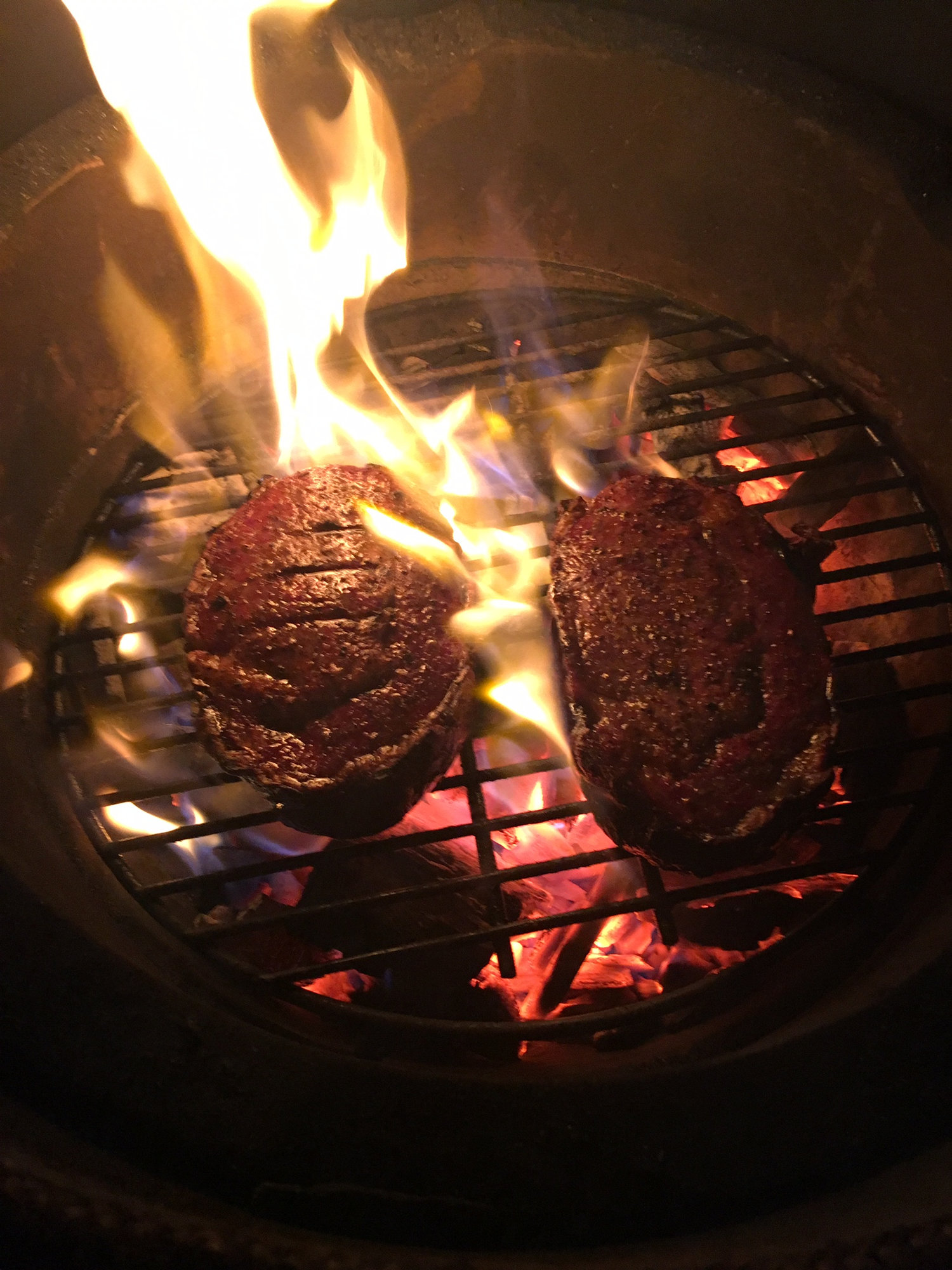
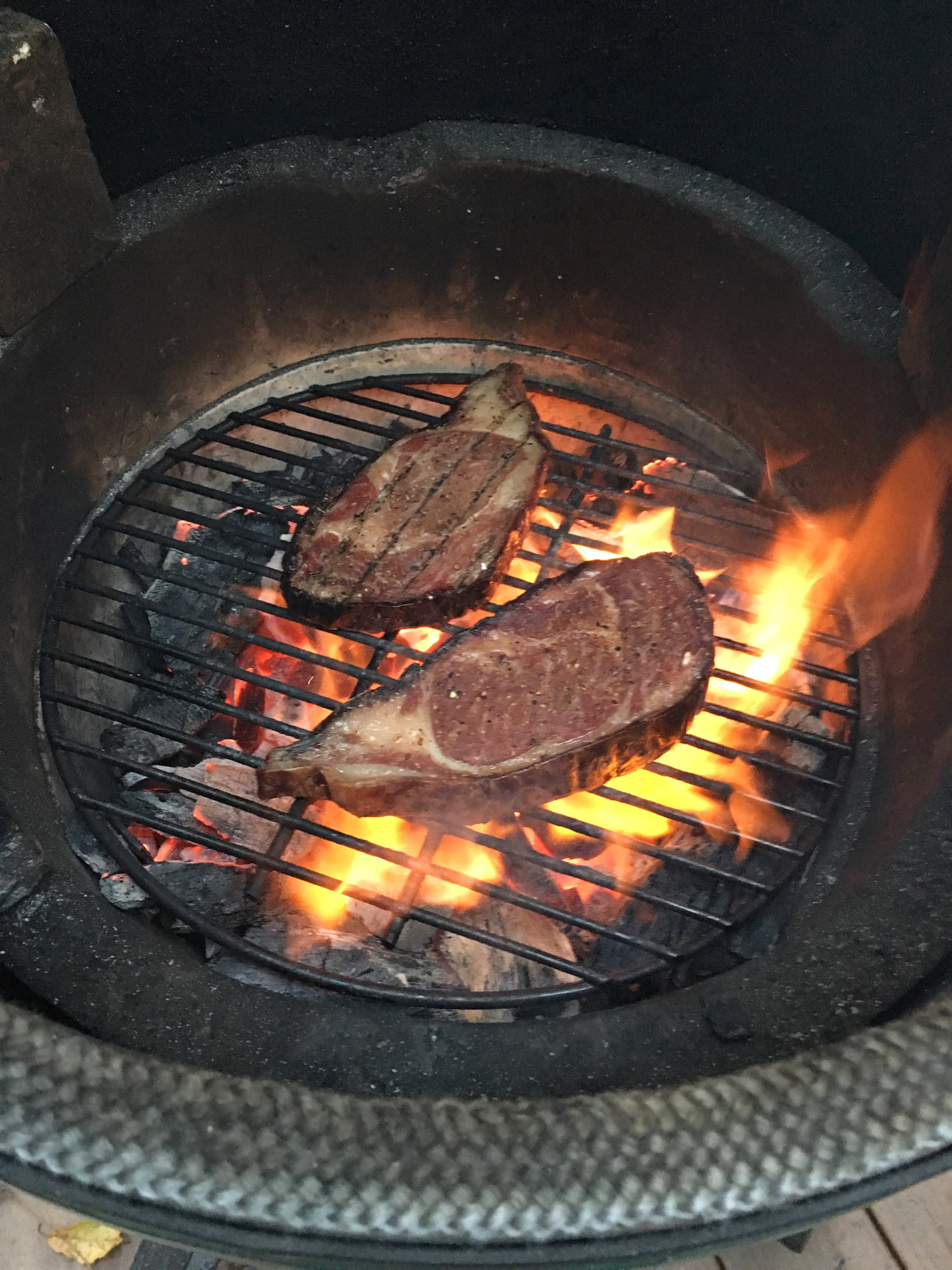

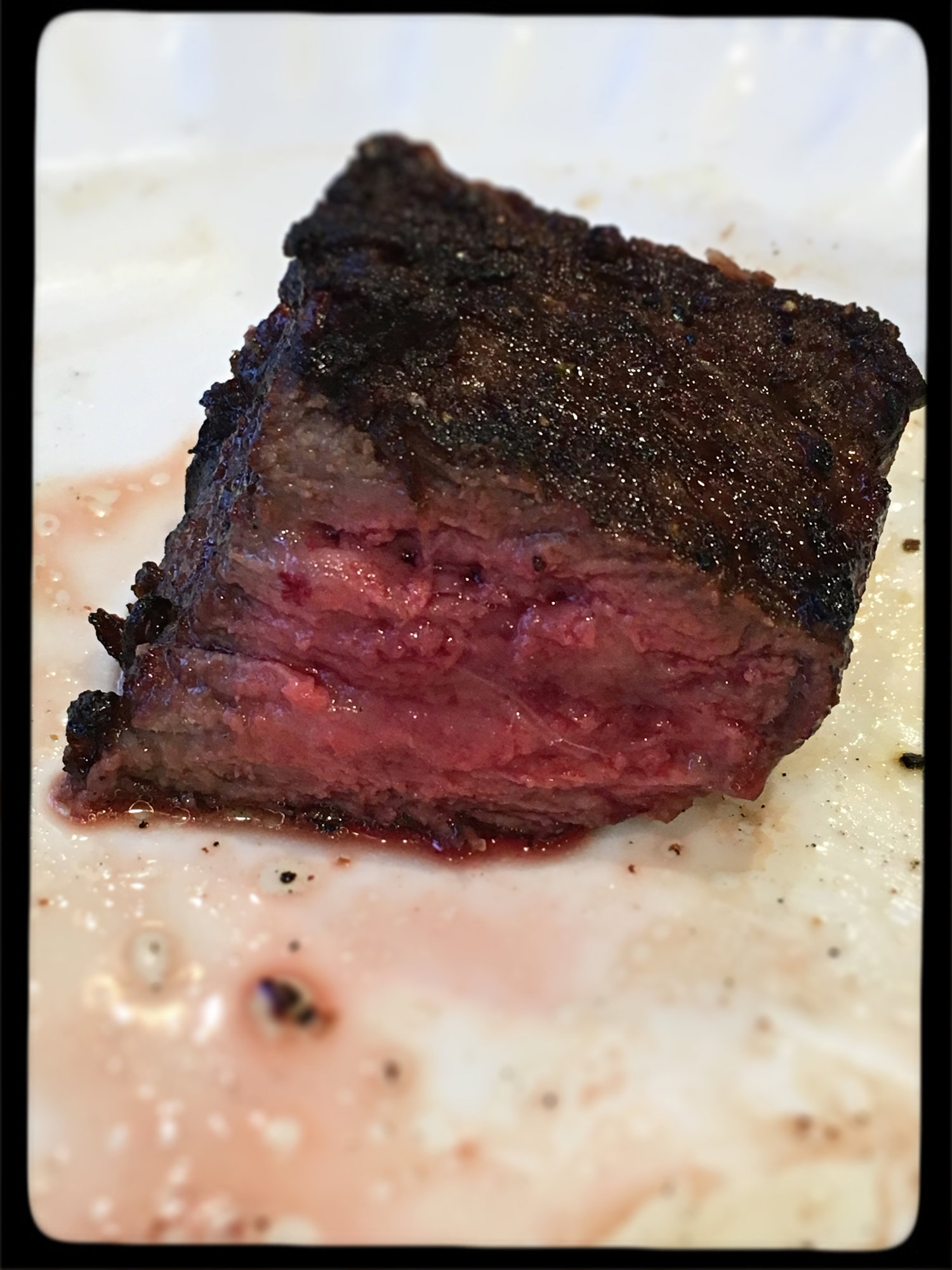
--------------------------------------------------
Burning lump in Downingtown, PA or diesel in Cape May, NJ.
....just look for the smoke!
Large and MiniMax
--------------------------------------------------Caliking said: Meat in bung is my favorite. -
Thanks guys for the detail and the pics. Beautiful looking meat there! I'll start looking around for a spare fridge that I can dedicate as an aging fridge. Cheers!
-
Is a mini fridge too small for circulation and temp (not product)XL aka Senior, Mini Max aka Junior, Weber Q's, Blackstone 22, Lion built in, RecTec Mini 300, Lodge Hibachi, Uuni, wife says I have too many grills,,,,how many shoes do you have?
IG --> matt_86m -
Some will say it is not sufficient.Matt86m said:Is a mini fridge too small for circulation and temp (not product)
While I have not personally used one, I will say that if you exchange the air so it does not get stale, and the temp of the meat stays in the cold range, I do not see why not.
I would not be worried about opening the fridge 2, 3, 6 times a day, the temp may rise, but how long does it take a 6,8,12 lb hunk of meat to warm? More than the 4 second exchange of air in my experience.... but do what makes you feel “safe”....
--------------------------------------------------
Burning lump in Downingtown, PA or diesel in Cape May, NJ.
....just look for the smoke!
Large and MiniMax
--------------------------------------------------Caliking said: Meat in bung is my favorite. -
depends on the design. some mini fridges have no way to remove moisture and that high humidity can result in biological growth.Matt86m said:Is a mini fridge too small for circulation and temp (not product)______________________________________________I love lamp.. -
I would not recommend one.Matt86m said:Is a mini fridge too small for circulation and temp (not product) -
You’ll find plenty of examples online of people using them to dry age with success. I say if you have one already, give it a shot.Matt86m said:Is a mini fridge too small for circulation and temp (not product)"I've made a note never to piss you two off." - Stike
"The truth is, these are not very bright guys, and things got out of hand." - Deep Throat -
A small fridge is fine so long as it’s efficient and maintains a temp below 40 degrees. Assuming a cut that fits.Sandy Springs & Dawsonville Ga
-
I've had great success using the UMAI bags. I've done strips and ribeye and both have been awesome. Super easy to keep them in a fridge with no worries about smells or anything else. Actually just picked up another hunk of ribeyes tonight to start on the next batch.
-
Does Stike ever roam the forum anymore?WeberWho said:I believe in forum member Stikes method on dry aging. Keep it simple. Throw it in your fridge and forget about it.
I use my spare beer fridge for the dry aging process. Whatever refrigerator you use make sure it's clean. I recommend washing and cleaning it prior. Don't use any cleaning chemicals that give off an odor. I use soap and water. Cleaning the refrigerator will help eliminate any bad mold from forming on the roast. This will also help reduce any funky odors the roast could absorb into it. Also keep food/leftovers sealed tight as it can give off an aroma. You want an odorless refrigerator as much as possible. So my spare fridge works best as it only has beer, bbq sauce, and spare milk most of the time. You also want a fridge that you can keep stable in temperature. Your main fridge fluctuates in temp constantly as it is opened many times throughout the day. So a spare fridge makes it a better candidate.
You NEED to have the fridge temp between 32 and 38 degrees. Anything under 32 begins to freeze and stops the process of dry aging and anything over 38 you start to run the risk of bad bacteria growth. The day before I set a stand up thermometer in the fridge so I can get a reading on how the cold the refrigerator is running. From there you can play around with the refrigerator thermostat until you find the temp you're happy with between 32 and 38 degrees. Keep this thermometer in the fridge so you can check and see you are within temp during the aging process.
I start out by picking up a strip loin or prime rib at either Costco/Sams. Once at home take out of the cryo pack and trim away any hard fat. Saving as much fat as possible for dry aging. Once trimmed wash under cold water and pat dry.
The next step would be to grab a cookie sheet and line the bottom of the cookie sheet with paper towels. After I line the cookie sheet with paper towels I place a cooling rack or something that will keep the steak elevated and off the paper towels when dry aging. You want air to circulate under the steak as it dry ages.
After the first couple days of dry aging the steak might lose some moisture and begin to leak onto the paper towels. Clean or not you want to remove and discard the paper towels on the cookie sheet after the 2nd or 3rd day. The steak hardens up after a few days in refrigerator and will stop leaking. So no need for any new paper towels.
Most say 40-45 days is the magic number for dry aging. This is 100% up to you. You should get a light almost like pine scent while it dry ages. You don't want a foul smell as if it's going bad. (obviously) Just check the temp gauge every 3-4-5 days and make sure you are in tolerance for temp.
43-44-45 days is my sweet mark. The steak will get a hard outer bark during the dry aging process. Some will trim the outer bark while other's wont. It's all personal preference. (Most say it's sacrilegious here on the forum to trim)
I usually cut each steak to a minimum of 1". After cutting into steaks I will vacuum seal and freeze. I typically get 10-12 steaks out of a whole NY Strip.
(The first photo I borrowed from forum member 510BG as I can't find mine with the cooling rack.)


 “There are three rules that I live by: never get less than twelve hours sleep; never play cards with a guy who has the same first name as a city; and never get involved with a woman with a tattoo of a dagger on her body.”
“There are three rules that I live by: never get less than twelve hours sleep; never play cards with a guy who has the same first name as a city; and never get involved with a woman with a tattoo of a dagger on her body.”
Coach Finstock Teen Wolf -
OMG. Bags are functional and for the faint hearted. Save your money. Or dry age in a bag.BigGreenKev said:I've had great success using the UMAI bags. I've done strips and ribeye and both have been awesome. Super easy to keep them in a fridge with no worries about smells or anything else. Actually just picked up another hunk of ribeyes tonight to start on the next batch.Sandy Springs & Dawsonville Ga -
Yes.Hans61 said:
Does Stike ever roam the forum anymore?WeberWho said:I believe in forum member Stikes method on dry aging. Keep it simple. Throw it in your fridge and forget about it.
I use my spare beer fridge for the dry aging process. Whatever refrigerator you use make sure it's clean. I recommend washing and cleaning it prior. Don't use any cleaning chemicals that give off an odor. I use soap and water. Cleaning the refrigerator will help eliminate any bad mold from forming on the roast. This will also help reduce any funky odors the roast could absorb into it. Also keep food/leftovers sealed tight as it can give off an aroma. You want an odorless refrigerator as much as possible. So my spare fridge works best as it only has beer, bbq sauce, and spare milk most of the time. You also want a fridge that you can keep stable in temperature. Your main fridge fluctuates in temp constantly as it is opened many times throughout the day. So a spare fridge makes it a better candidate.
You NEED to have the fridge temp between 32 and 38 degrees. Anything under 32 begins to freeze and stops the process of dry aging and anything over 38 you start to run the risk of bad bacteria growth. The day before I set a stand up thermometer in the fridge so I can get a reading on how the cold the refrigerator is running. From there you can play around with the refrigerator thermostat until you find the temp you're happy with between 32 and 38 degrees. Keep this thermometer in the fridge so you can check and see you are within temp during the aging process.
I start out by picking up a strip loin or prime rib at either Costco/Sams. Once at home take out of the cryo pack and trim away any hard fat. Saving as much fat as possible for dry aging. Once trimmed wash under cold water and pat dry.
The next step would be to grab a cookie sheet and line the bottom of the cookie sheet with paper towels. After I line the cookie sheet with paper towels I place a cooling rack or something that will keep the steak elevated and off the paper towels when dry aging. You want air to circulate under the steak as it dry ages.
After the first couple days of dry aging the steak might lose some moisture and begin to leak onto the paper towels. Clean or not you want to remove and discard the paper towels on the cookie sheet after the 2nd or 3rd day. The steak hardens up after a few days in refrigerator and will stop leaking. So no need for any new paper towels.
Most say 40-45 days is the magic number for dry aging. This is 100% up to you. You should get a light almost like pine scent while it dry ages. You don't want a foul smell as if it's going bad. (obviously) Just check the temp gauge every 3-4-5 days and make sure you are in tolerance for temp.
43-44-45 days is my sweet mark. The steak will get a hard outer bark during the dry aging process. Some will trim the outer bark while other's wont. It's all personal preference. (Most say it's sacrilegious here on the forum to trim)
I usually cut each steak to a minimum of 1". After cutting into steaks I will vacuum seal and freeze. I typically get 10-12 steaks out of a whole NY Strip.
(The first photo I borrowed from forum member 510BG as I can't find mine with the cooling rack.)


 "I've made a note never to piss you two off." - Stike
"I've made a note never to piss you two off." - Stike
"The truth is, these are not very bright guys, and things got out of hand." - Deep Throat -
Stike has been known to have a couple alias names on the forum. I don't think I've seen any in the last year or twoHans61 said:
Does Stike ever roam the forum anymore?WeberWho said:I believe in forum member Stikes method on dry aging. Keep it simple. Throw it in your fridge and forget about it.
I use my spare beer fridge for the dry aging process. Whatever refrigerator you use make sure it's clean. I recommend washing and cleaning it prior. Don't use any cleaning chemicals that give off an odor. I use soap and water. Cleaning the refrigerator will help eliminate any bad mold from forming on the roast. This will also help reduce any funky odors the roast could absorb into it. Also keep food/leftovers sealed tight as it can give off an aroma. You want an odorless refrigerator as much as possible. So my spare fridge works best as it only has beer, bbq sauce, and spare milk most of the time. You also want a fridge that you can keep stable in temperature. Your main fridge fluctuates in temp constantly as it is opened many times throughout the day. So a spare fridge makes it a better candidate.
You NEED to have the fridge temp between 32 and 38 degrees. Anything under 32 begins to freeze and stops the process of dry aging and anything over 38 you start to run the risk of bad bacteria growth. The day before I set a stand up thermometer in the fridge so I can get a reading on how the cold the refrigerator is running. From there you can play around with the refrigerator thermostat until you find the temp you're happy with between 32 and 38 degrees. Keep this thermometer in the fridge so you can check and see you are within temp during the aging process.
I start out by picking up a strip loin or prime rib at either Costco/Sams. Once at home take out of the cryo pack and trim away any hard fat. Saving as much fat as possible for dry aging. Once trimmed wash under cold water and pat dry.
The next step would be to grab a cookie sheet and line the bottom of the cookie sheet with paper towels. After I line the cookie sheet with paper towels I place a cooling rack or something that will keep the steak elevated and off the paper towels when dry aging. You want air to circulate under the steak as it dry ages.
After the first couple days of dry aging the steak might lose some moisture and begin to leak onto the paper towels. Clean or not you want to remove and discard the paper towels on the cookie sheet after the 2nd or 3rd day. The steak hardens up after a few days in refrigerator and will stop leaking. So no need for any new paper towels.
Most say 40-45 days is the magic number for dry aging. This is 100% up to you. You should get a light almost like pine scent while it dry ages. You don't want a foul smell as if it's going bad. (obviously) Just check the temp gauge every 3-4-5 days and make sure you are in tolerance for temp.
43-44-45 days is my sweet mark. The steak will get a hard outer bark during the dry aging process. Some will trim the outer bark while other's wont. It's all personal preference. (Most say it's sacrilegious here on the forum to trim)
I usually cut each steak to a minimum of 1". After cutting into steaks I will vacuum seal and freeze. I typically get 10-12 steaks out of a whole NY Strip.
(The first photo I borrowed from forum member 510BG as I can't find mine with the cooling rack.)


 "The pig is an amazing animal. You feed a pig an apple and it makes bacon. Let's see Michael Phelps do that" - Jim Gaffigan
"The pig is an amazing animal. You feed a pig an apple and it makes bacon. Let's see Michael Phelps do that" - Jim Gaffigan
Minnesota -
Thankfully.JohnInCarolina said:
Yes.Hans61 said:
Does Stike ever roam the forum anymore?WeberWho said:I believe in forum member Stikes method on dry aging. Keep it simple. Throw it in your fridge and forget about it.
I use my spare beer fridge for the dry aging process. Whatever refrigerator you use make sure it's clean. I recommend washing and cleaning it prior. Don't use any cleaning chemicals that give off an odor. I use soap and water. Cleaning the refrigerator will help eliminate any bad mold from forming on the roast. This will also help reduce any funky odors the roast could absorb into it. Also keep food/leftovers sealed tight as it can give off an aroma. You want an odorless refrigerator as much as possible. So my spare fridge works best as it only has beer, bbq sauce, and spare milk most of the time. You also want a fridge that you can keep stable in temperature. Your main fridge fluctuates in temp constantly as it is opened many times throughout the day. So a spare fridge makes it a better candidate.
You NEED to have the fridge temp between 32 and 38 degrees. Anything under 32 begins to freeze and stops the process of dry aging and anything over 38 you start to run the risk of bad bacteria growth. The day before I set a stand up thermometer in the fridge so I can get a reading on how the cold the refrigerator is running. From there you can play around with the refrigerator thermostat until you find the temp you're happy with between 32 and 38 degrees. Keep this thermometer in the fridge so you can check and see you are within temp during the aging process.
I start out by picking up a strip loin or prime rib at either Costco/Sams. Once at home take out of the cryo pack and trim away any hard fat. Saving as much fat as possible for dry aging. Once trimmed wash under cold water and pat dry.
The next step would be to grab a cookie sheet and line the bottom of the cookie sheet with paper towels. After I line the cookie sheet with paper towels I place a cooling rack or something that will keep the steak elevated and off the paper towels when dry aging. You want air to circulate under the steak as it dry ages.
After the first couple days of dry aging the steak might lose some moisture and begin to leak onto the paper towels. Clean or not you want to remove and discard the paper towels on the cookie sheet after the 2nd or 3rd day. The steak hardens up after a few days in refrigerator and will stop leaking. So no need for any new paper towels.
Most say 40-45 days is the magic number for dry aging. This is 100% up to you. You should get a light almost like pine scent while it dry ages. You don't want a foul smell as if it's going bad. (obviously) Just check the temp gauge every 3-4-5 days and make sure you are in tolerance for temp.
43-44-45 days is my sweet mark. The steak will get a hard outer bark during the dry aging process. Some will trim the outer bark while other's wont. It's all personal preference. (Most say it's sacrilegious here on the forum to trim)
I usually cut each steak to a minimum of 1". After cutting into steaks I will vacuum seal and freeze. I typically get 10-12 steaks out of a whole NY Strip.
(The first photo I borrowed from forum member 510BG as I can't find mine with the cooling rack.)


 Sandy Springs & Dawsonville Ga
Sandy Springs & Dawsonville Ga -
I tried a mini fridge it was too small. I wasn’t able to fit an entire primal.Matt86m said:Is a mini fridge too small for circulation and temp (not product) -
A standard sized fridge. Check. 40 or below. Check. A standard fridge would be best,Sandy Springs & Dawsonville Ga
-
I suppose a mini-fridge would work if you put a fan in it. Regardless, temp in the 33-39 F range is mandatory.______________________________________________I love lamp..
-
-
So a mini fridge or freezer converted to a fridge where you don't have humidity removal...you don't want humidity over 85%. too low is not as big a deal as the subprimal will develop a crust that slows down desiccation.______________________________________________I love lamp..
Categories
- All Categories
- 184K EggHead Forum
- 16.1K Forum List
- 461 EGGtoberfest
- 1.9K Forum Feedback
- 10.5K Off Topic
- 2.4K EGG Table Forum
- 1 Rules & Disclaimer
- 9.2K Cookbook
- 15 Valentines Day
- 118 Holiday Recipes
- 348 Appetizers
- 521 Baking
- 2.5K Beef
- 90 Desserts
- 167 Lamb
- 2.4K Pork
- 1.5K Poultry
- 33 Salads and Dressings
- 322 Sauces, Rubs, Marinades
- 548 Seafood
- 175 Sides
- 122 Soups, Stews, Chilis
- 40 Vegetarian
- 103 Vegetables
- 315 Health
- 293 Weight Loss Forum









